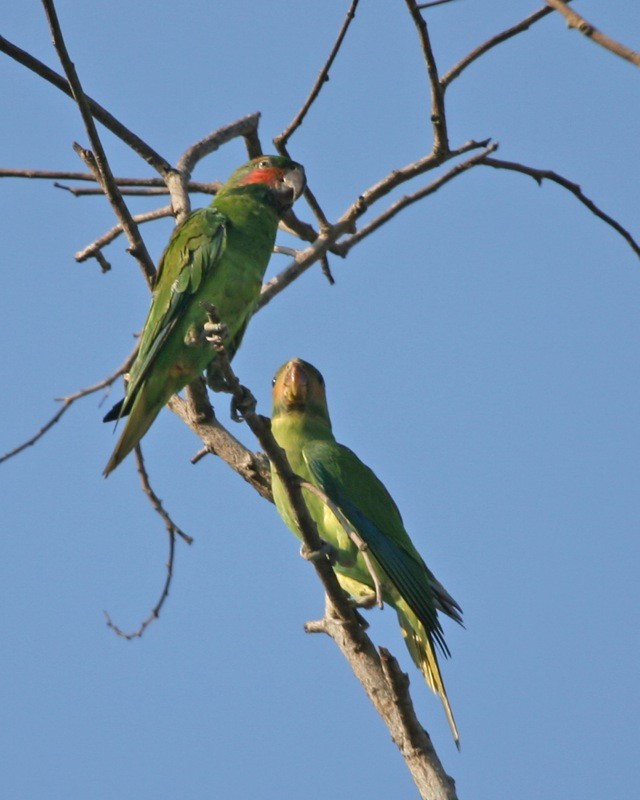Long-tailed Parakeet
A species of Ring-necked Parakeets Scientific name : Psittacula longicauda Genus : Ring-necked Parakeets
Long-tailed Parakeet, A species of Ring-necked Parakeets
Botanical name: Psittacula longicauda
Genus: Ring-necked Parakeets
Content
Description General Info
 Photo By Lip Kee Yap , used under CC-BY-SA-2.0 /Cropped and compressed from original
Photo By Lip Kee Yap , used under CC-BY-SA-2.0 /Cropped and compressed from original Description
It is mainly green with a long blue tail. The male has a black cap and red face. The female lacks the black cap and has less red. 
Size
48 cm
Nest Placement
Cavity
Feeding Habits
Long-tailed Parakeet feeds on a variety of fruits like betel nuts and papaya, as well as Pandanus fruit and kapor. Long-tailed Parakeet also consumes Acacia and Bombax flowers, alongside seeds from several plants. They forage for the mesocarp of oil-palm fruits, sometimes being considered pests.
Habitat
Long-tailed Parakeet thrives in diverse habitats, primarily occupying lowland regions up to 300 meters in elevation. These birds frequently inhabit coastal areas, particularly favoring swamp forests, including peatswamp and mangrove ecosystems, as well as rainforest edges. They are also adapted to human-modified landscapes, such as oil palm and coconut plantations, gardens, and parks, and are known to forage in agricultural lands that produce tropical fruits and seeds.
Dite type
Herbivorous
General Info
Feeding Habits
Bird food type
Behavior
The long-tailed parakeet is an extremely social bird, always seen communicating with other birds of its species. Even though small groups are usually seen, flocks of thousands of birds have been in the Andaman Islands and Borneo. However, the large flocks tend to appear during breeding season. It is a colony breeder. Birds on the Malay Peninsula tend to breed from December to February while birds on the Nicobar and Andaman Islands tend to breed from February to March. Females tend to lay a clutch of 2 to 4 eggs approximately 30.5 x 24.5mm. It usually takes about 23 to 24 days for the eggs to hatch. Chicks fledge at around 7 weeks old. Its diet consists of a variety of berries, papaya, areca nuts, a wide variety of cultivated and wild fruit, seeds, and cultivated grains such as corn. It is a curious species, as it is often seen playing with sticks or other materials found in its environment. 
Species Status
VULNERABLE. Previously considered Near Threatened.
Scientific Classification
Phylum
Chordates Class
Birds Order
Parrots Family
Parrots Genus
Ring-necked Parakeets Species
Long-tailed Parakeet